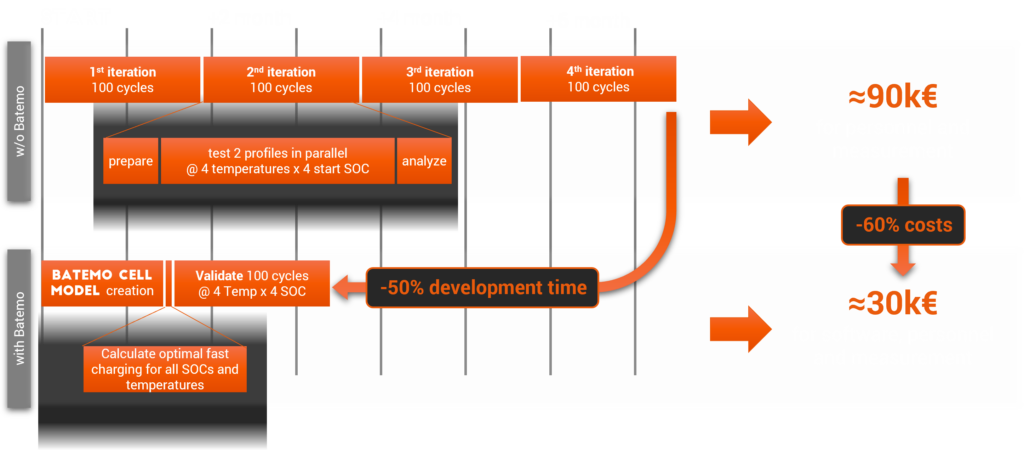Charging Time is key for high product quality.
But how to achieve charging times of
less than
15 min
?
Challenge
The fast-charging capability is a decisive purchase requirement, not only for electric vehicles. Five boundaries are technically restricting the charging time as shown below. Violating the cell-specific limits leads to accelerated cell aging or even safety risks. The progression of the maximum permissible charging current over time, considering all five limits, depends on the electrochemical and thermal initial and boundary conditions in a strongly nonlinear manner. In addition, as the anode surface potential inside the cell is not experimentally accessible, the suitability of a charging current profile can only be tested indirectly by costly and time-consuming cycling tests.

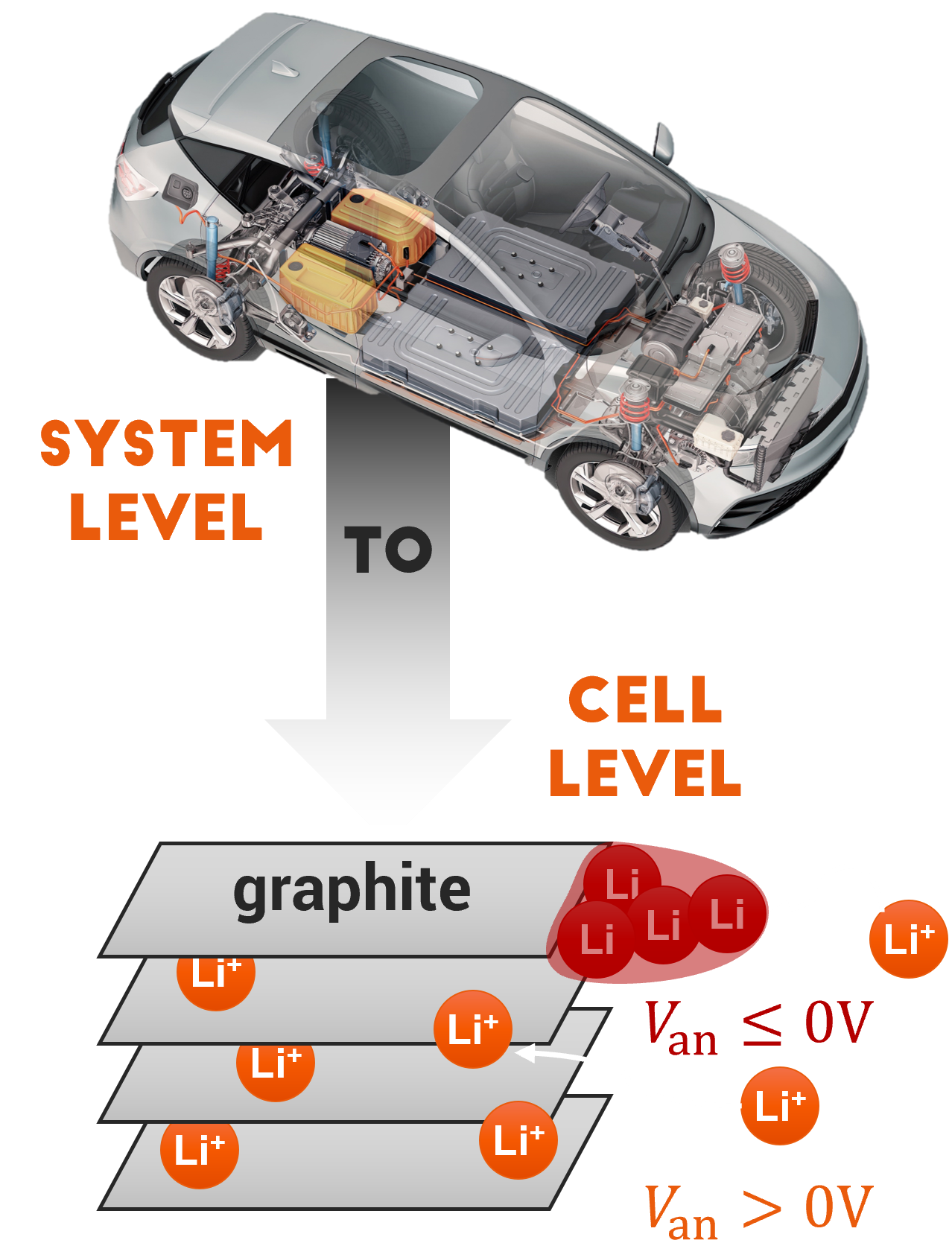
The five limits of fast-charging
1
power
Limited by power grid.
2
current
Limited by charger current.
3
temperature
Limited by battery cell
(temperature-induced aging).
4
voltage
Limited by battery cell
(voltage-induced aging).
5
anode
Limited by battery cell
(lithium-plating aging).
Moreover, the fast charge capability of the battery is dependent on module design, cooling, cell type and therefore has to be solved on system level. This is why the development of optimal current profiles in the multidimensional, nonlinear parameter space consisting of time, state of charge, state of health and temperature is challenging.
Solution
You need a tool to predict all five limits under given operating conditions for individual cells and modules. And that is what the Batemo Cell Model is. Batemos unique battery modelling technology allows to derive optimal fast-charge profiles for the entire parameter space. This is the basis for an optimized testing design to experimentally validate the numerically calculated fast-charge profiles at carefully selected different operation conditions. This straightforward workflow simultaneously reduces charging time, development time and development cost.
If you have a physical, parametrized and validated model…
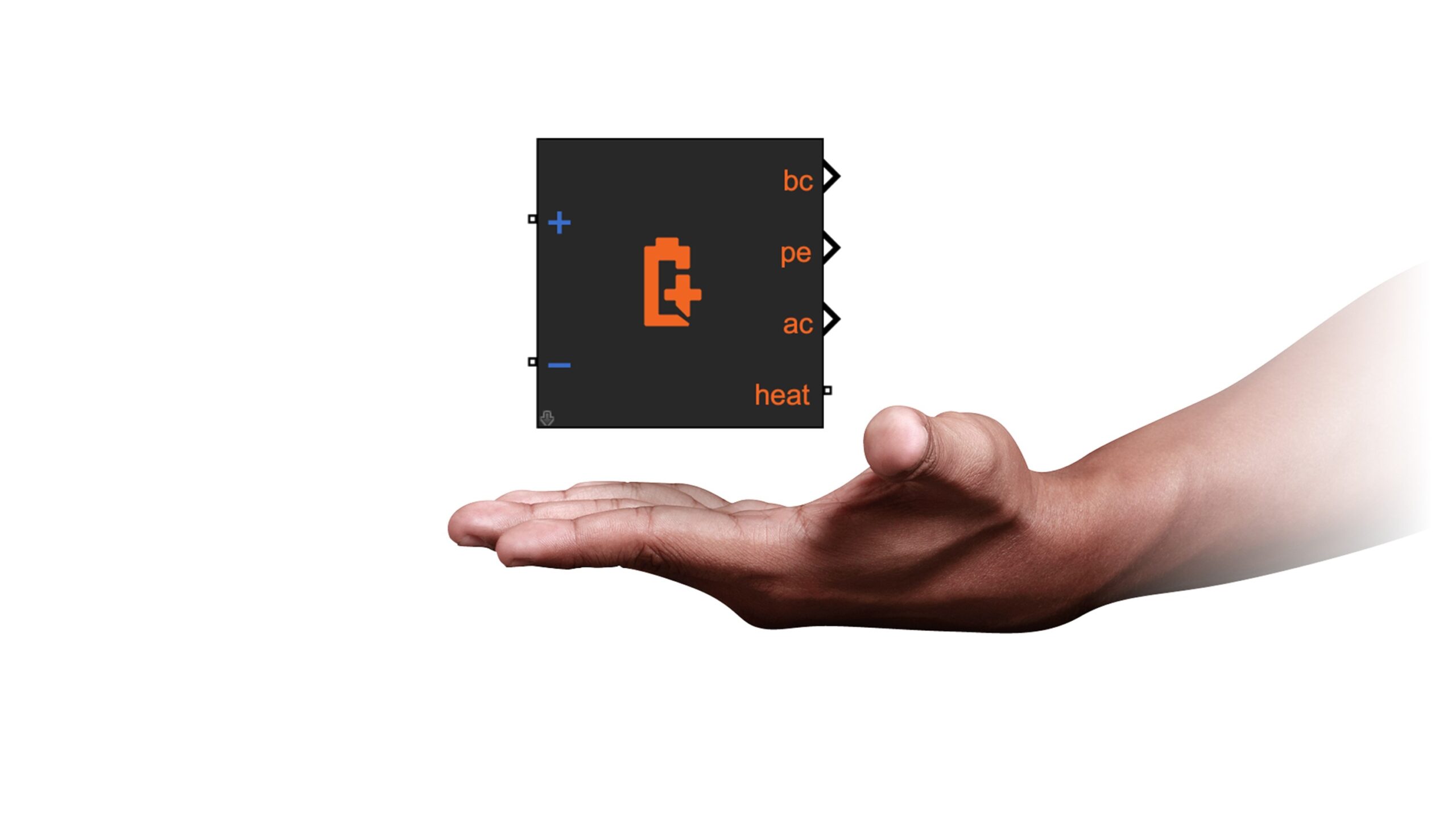
…you can calculate an optimal fast-charging strategy based on simulations.
Fast
Batemo Cell Models run within seconds on normal office computers. This enables large parameter variation to consider the nonlinear dependencies on temperature, SOC and aging state.
Physical
Only if you split up the physical processes in the cell correctly, you can calculate the anode surface potential and access all five limits of fast charging simultaneously.
Accurate
Quantitativly reliable simulation results need extensively validated models. The Batemo Cell Model is the most accurate battery cell model there is – guaranteed! We always demonstrate the validity through extensive measurements that prove highest accuracy.
Our methodology is to actively control the anode surface potential and thereby avoid lithium plating as shown in the example below. Thereby you reach the physically fastest possible charge profiles under all operating condition. The low computational times allows to automatically repeat this calculation under all initial and boundary conditions to derive ready to implement fast charge maps.
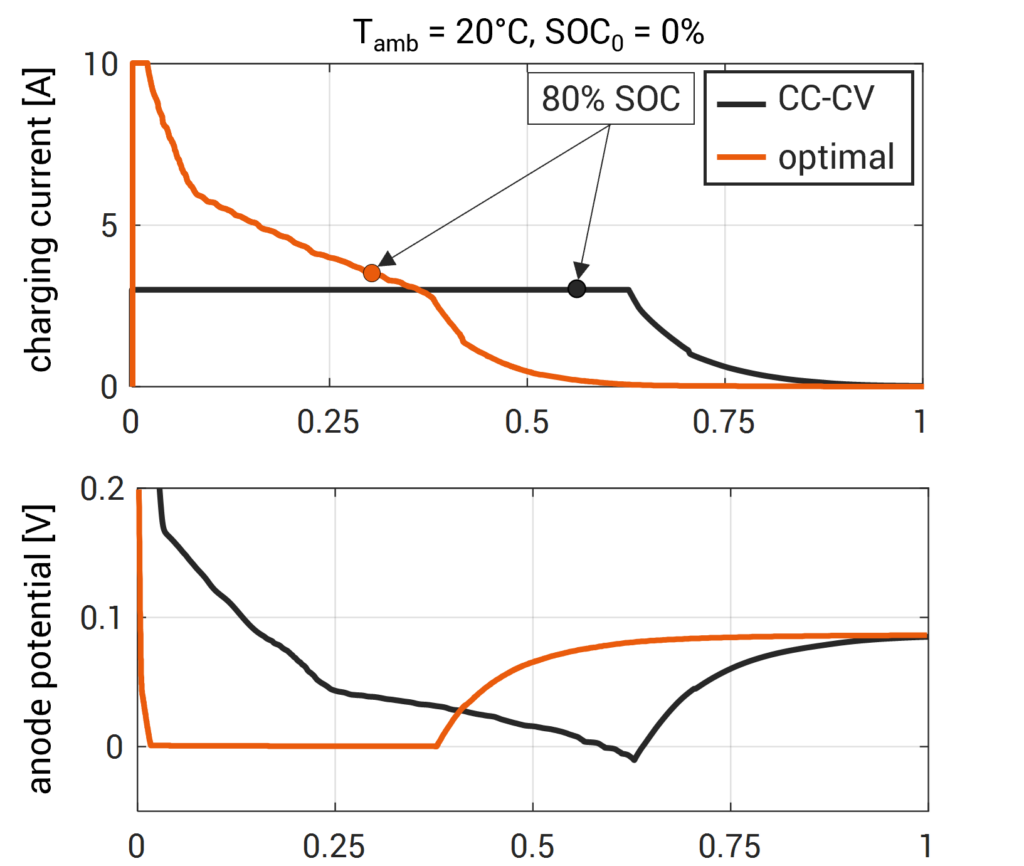
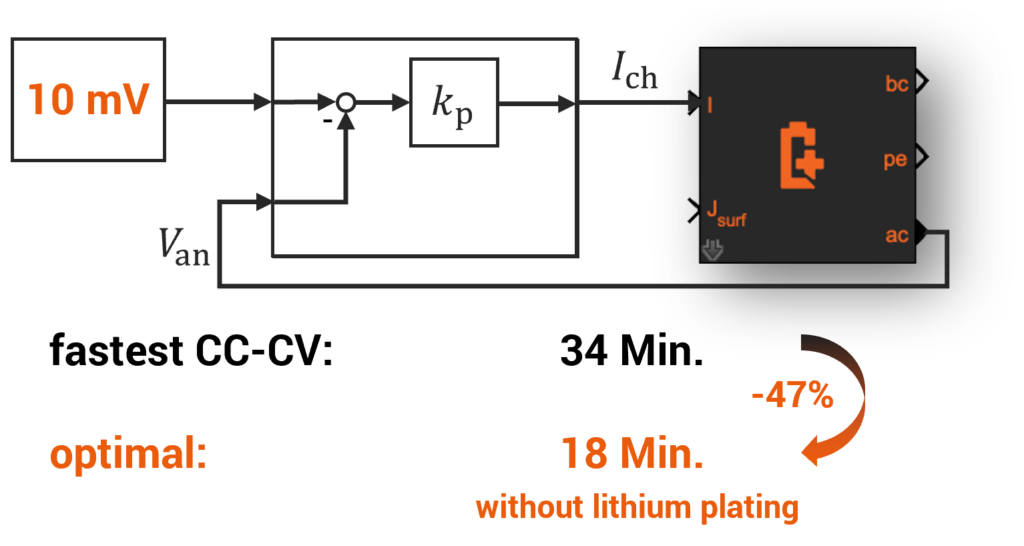
development method
-
Get the Batemo Cell Model to have a physical, parameterized and validated battery cell model.
-
Integrate the cell model into your module model.
-
Do batch simulations and derive optimal fast charging profiles and operational strategies.

avoid lithium plating!
-
Use the Batemo Cell Model to do a design of validation experiments.
-
Perform the validation experiments and directly implement it in your BMS!
Advantages
Use the Batemo Cell Models for simulation-based fast-charge development, making it faster and at lower cost while leading to lower charging times. This is how we generate value and contribute to your success.
-20%
Charging Time
Cut down the charging time to the physical minimum by having access to all five limits at the same time.
-50%
Development Time
Speed up your development time by relying on a straightforward workflow instead of cycle tests in trial-and-error principle.
-60%
Development Costs
Safe test efforts by utilizing digital development methods. Test smarter, not harder.
Charging Time
Batemos unique technology enables to reach the physically fastest possible charge profiles by actively controlling the anode surface potential. Without access to the anode surface potential, the only way is to apply stepped charge profiles while incrementally increasing your charge current and monitoring your cell aging. This trial-and error approach will never yield the real optimum as shown in the picture below. Even an optimal stepped charge profile stays 20% behind the physical optimum for the Tesla Model Y (4680) cell.
Example: Tesla Model Y (4680)
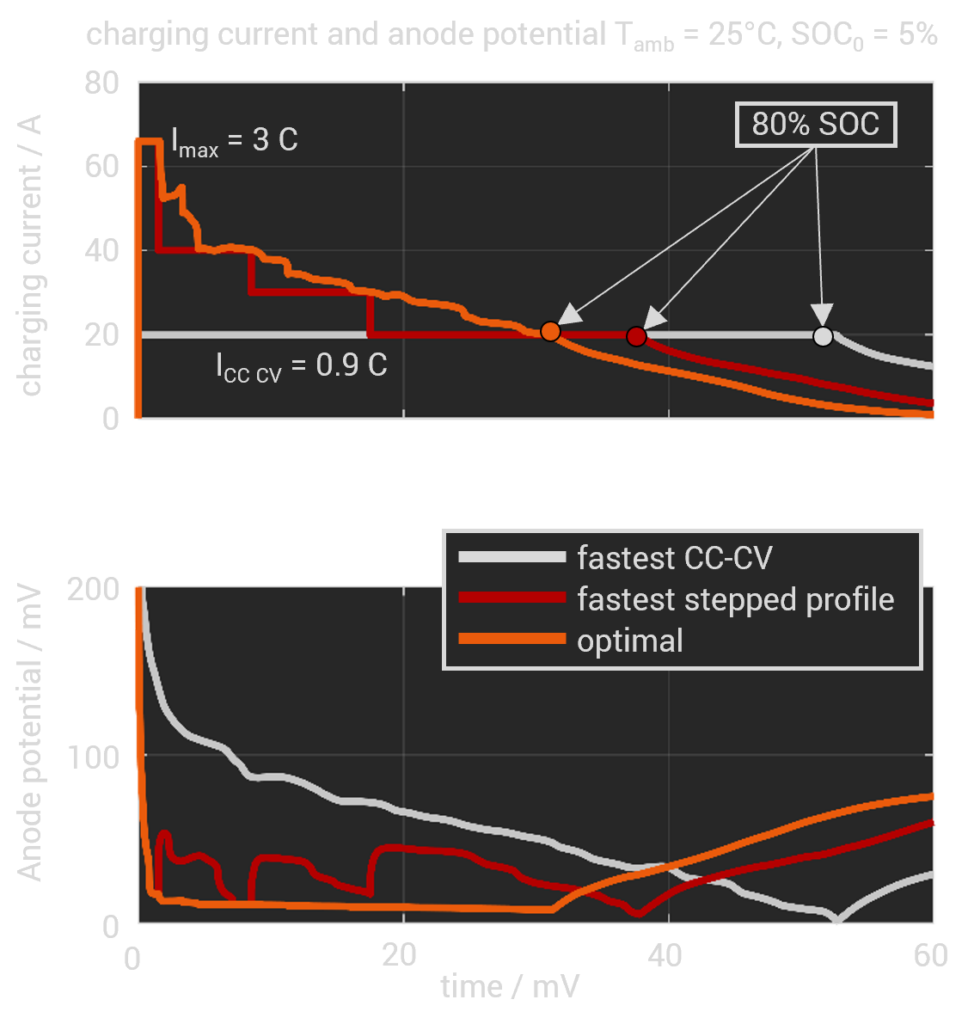


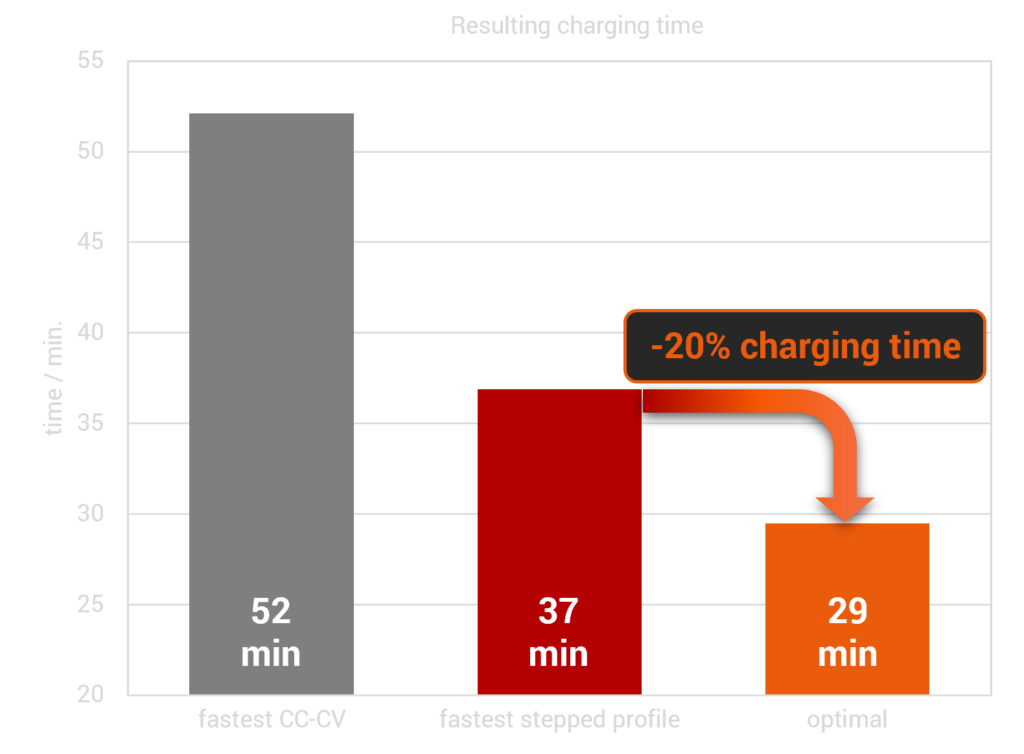
Development Time and costs
Batemos unique technology enables setting up a straightforward development workflow by predicting the anode surface potential. Without access to the anode surface potential, you must iteratively try out charge profiles and check their applicability in cycling tests. This trial-and-error approach is cost- and time consuming.
Without Batemo Technology
apply charge profile and conduct test
Let’s check one example: 4 iterations of experimental trial-and-error fast charge development takes about 7 months. When applying 2 profiles simultaneously, you can only test 8 different charging profiles. Even for a small cylindrical cell this adds up to ≈90k€ personnel and measurement expenses. Let’s do this straightforward: with a Batemo Cell Model you can calculate optimized charge profiles for all operation and starting conditions within days. Including the Batemo Cell Model generation, we have those profiles ready and experimentally validated within three months. Adding software costs, personnel and measurement expenses for validation you stay below 30k€.
